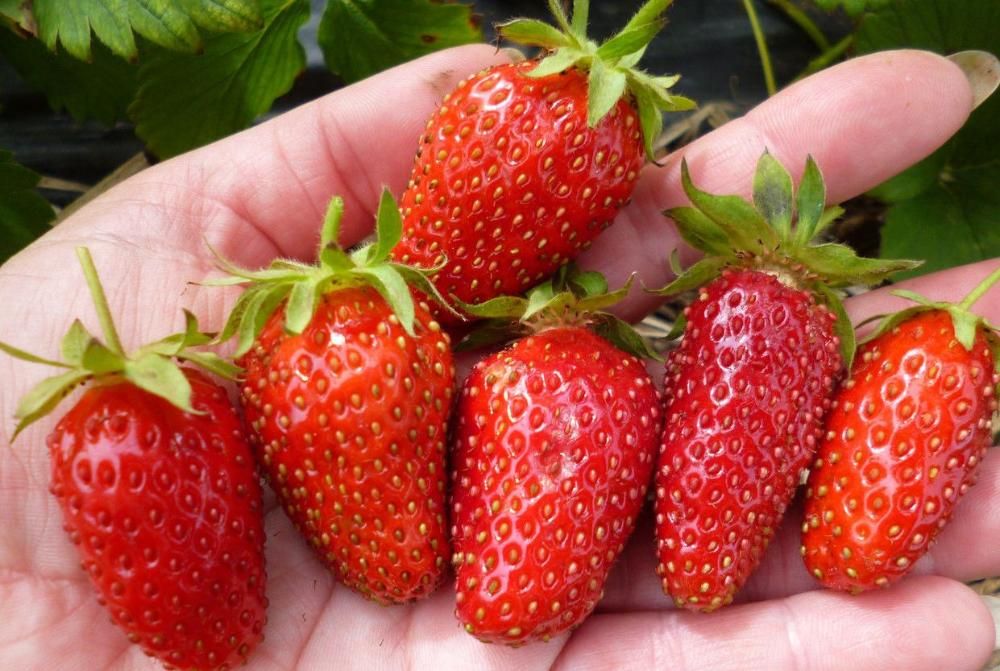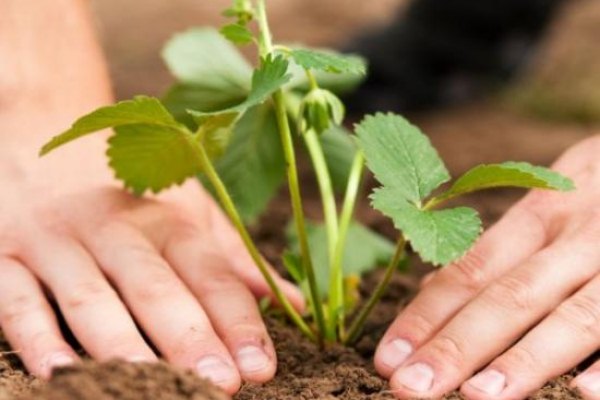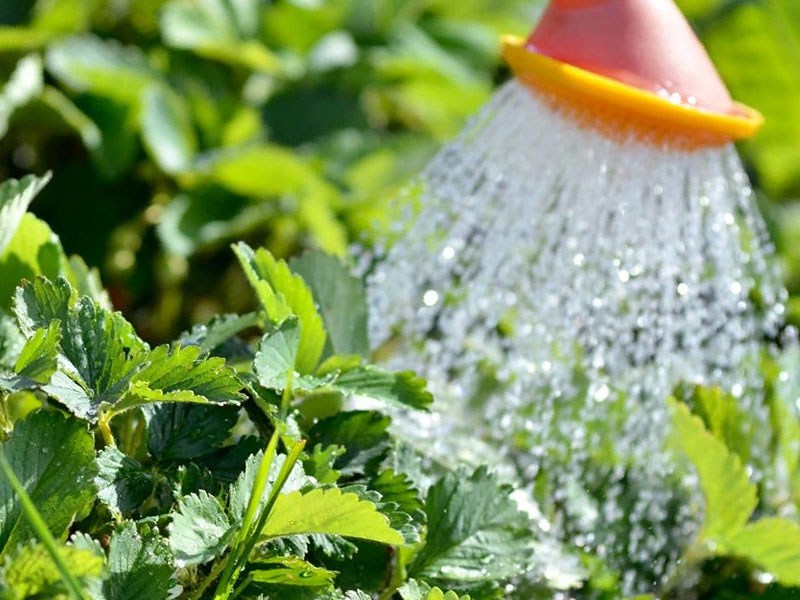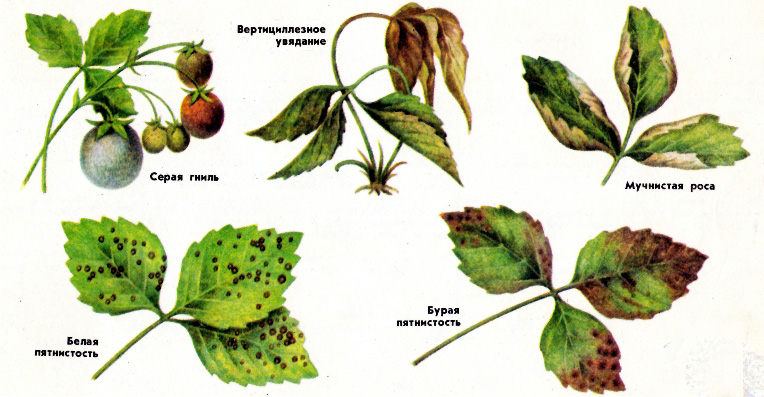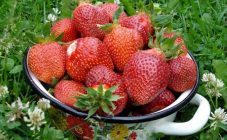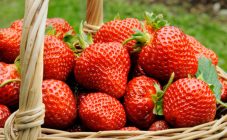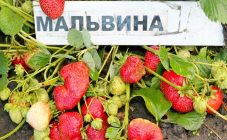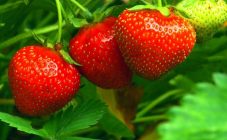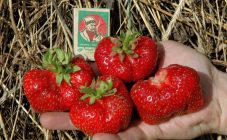Content:
Strawberry Divnaya is well known to Russian gardeners. The culture takes root well on any soils, is characterized by high productivity, is resistant to cold and drought.
Variety history
In 1987, the variety was bred by crossing the Holiday and Festivalnaya species by the St. Petersburg breeder, candidate of agricultural sciences GD Aleksandrova. In 2008, the Divnaya variety was included in the state register, recommended for cultivation in summer cottages, farms.
Very often this variety is confused with another species - the Gypsy remontant strawberry. It is distinguished by early ripening, frost resistance (withstands temperatures of −40 ° C), and abundant yield. Its bushes are medium-sized, semi-spreading. The berries are large, burgundy, sweet, conical in shape. The weight of one specimen is 80 g. Gypsy strawberry is recommended for trial planting in all regions of the country (open, closed ground).
Other popular strawberry varieties that have in common with the Marvelous look:
- Strawberry Altair. The culture was obtained at the State Scientific Institution of the Sverdlovsk Horticultural Selection Station of the Russian Agricultural Academy by a group of scientists (G.V. Andreeva, I.I.Bogdanova, E.Yu. Nevostrueva). The variety is distinguished by good winter hardiness, medium late ripening. Strawberry bushes are medium-sized, semi-spreading, have good foliage. From 1 m² of planting you can collect up to 1 kg. The weight of the fruit of the primary harvest is 40 g (the usual weight is 11.6 g). The berries are orange-red, cylindrical, with necks. Seeds are yellowish, moderately depressed. The pulp is medium-dense, red, juicy, sweet and sour. This species has good resistance to gray rot, leaf spot.
- Strawberry Alice. Bushes are strong, erect. The leaves are not thick, they have many rosettes. It blooms in mid-May, and the fruits ripen by mid-June. The berries are large, regular, dark red, shiny, have a blunt-conical shape, without necks. The weight of one strawberry is 16 - 25 g. The variety is recommended for cultivation in the Crimea, in the North Caucasus. Well transported. The disadvantage is low winter hardiness. Disease resistance is average.
- American strawberry was bred by US breeders. Its bushes are strong, tall, spreading, the root system is powerful. The fruits are large (at the time of the first harvest), regular, round-conical, have small necks, raised sepals. The berries are beautiful, red, by the time of full ripeness they become dark-burgundy, fragrant. The pulp is firm, sweet and sour, and has a pleasant taste. The fruits can be stored for a long time, they tolerate long-distance transportation. The variety is characterized by winter hardiness, resistant to fungal infections.
Strawberry Divnaya: variety description
- Bushes are high, powerful, compact, erect. Leaves are green, large, glossy, wrinkled, thick. The stems are strong. Long, numerous whiskers of medium thickness.
- The plant forms many slightly curved peduncles. They are located at the level of the leaves (the berries do not touch the ground). The inflorescences have a large number of flowers.
- The flowers are large, bisexual. They do not need other strawberry varieties for pollination.
- The whiskers are large, reddish-brown, growing intensively throughout the season.
- Fruits have blunt-conical shapes, sepals necks are absent (for this they are called "finger"). Over time, the berries can change their appearance (depending on climate, weather, soil composition, care) to an oval shape.
- The berries of the first harvest are large, flat, elongated, their surface has many folds. One strawberry weighs 35 - 40 g. The next fruits decrease slightly, become even, smooth, shiny (the weight of one specimen is from 17 to 25 g).
The berries are bright red, overripe fruits turn cherry. The skin is firm, elastic. Seeds are yellow, their number is rather average, and not deeply planted.
Characteristic
- The pulp is juicy, dense, without emptiness, coarse fibers, sweet-sour taste, has a pronounced aroma of wild strawberries.
- Chemical composition: sugars - 5.9%, acids - 1.7%, ascorbic acid - 44 mg /%.
- The berries ripen unevenly - this is a characteristic feature of the Divnaya variety, but the yield is high. On the garden plot, 1 - 1.2 kg of berries can be obtained from each bush. In industrial production from 1 hectare I collect up to 150 centners.
- Strawberry bushes have good frost resistance (withstand -20-25 ° C without covering). True, gardeners in the northern regions should be wary of spring (return) frosts.
- This type of strawberry has good immunity, is resistant to verticellosis, gray mold, all kinds of fungal spots.
- The culture propagates by dividing the bush (if it is more than 4 years old) or by a mustache, and rather quickly. It is not afraid of drought, so it can be safely grown in the southern regions. It can do without watering for a long time.
- The fruits ripen very early: in the central region of Russia, the berries ripen in early June, in the south of the country they ripen by the end of May.
Due to its unique qualities, this variety can grow in many Russian territories. Summer residents believe that the Divnaya culture is the best strawberry.
Landing
For plants, you should choose a sunny, spacious area with nutritious, loose, moisture-absorbing soil. The culture loves slightly acidic soils. The place should be well protected from the north wind and draft. It is better that the groundwater is at a depth of 70 - 80 cm from the surface of the earth.
Garden strawberries are planted with 4 bushes per 1 m². A distance of 30 - 35 cm is left between the seedlings. Planting is carried out in spring or autumn.
Before planting, plant roots are advised to soak in a solution of root or other growth stimulant.
The seedlings should be placed deep in the holes. The roots should not remain on the soil surface. If they are too long, they are trimmed. The land around the bushes is well compacted and watered. During irrigation, you can use ammonium nitrate (1 matchbox (20 g) per 10 liters of water). It is recommended to irrigate the garden with this solution for about 2 more weeks.
Further care
It is preferable to water the plant by rain, drip method. Although the Divnaya variety tolerates drought well, regular irrigation will significantly improve the size, taste, and quality of strawberries. In May, June, plants can be watered no more than 3 times per month. In August, September, 2 irrigations will be enough. In late autumn, as needed (if the land is excessively dry).
- You can grow strawberries on agrofibre. This will save gardeners from the constant loosening of the soil, the fight against weeds.
- Every year you need to thin out strawberry bushes, remove diseased, dry leaves, cut off excess mustaches.
- Strawberries growing in northern regions should be covered with white agrofibre or planted under film tunnels.
Plants are fed in early spring (with nitrogen), during the flowering period (with complex mineral fertilizers, including potassium, phosphorus, magnesium, iron), in the fall the beds are covered with a rather thick layer of compost or humus. Top dressing should be applied 2 weeks after transplanting. Each gardener calculates their number individually.
If the weather is too rainy, then it is recommended to spray the bushes with fungicides, bactericidal preparations (coronet, allett, infinito, teldor). Can be sprayed with phytosporin. Also cover the plants with polyethylene.
In the fall, the bushes are prepared for winter: they cut, clean the beds from fallen leaves and weeds. In early October, fertilize with complex compounds or mullein. In the last days of the month, the plants are shifted with straw with a layer of at least 5 cm.If the regions differ in temperature below −25 ° C, then they additionally use a covering material.
Diseases and pests
All strawberry varieties can be affected by:
- root, gray, black rot, spot;
- powdery mildew;
- phytosporosis, fusarium xanthosis;
- verticellosis, septoria, ramulariasis.
They are also exposed to insect invasions:
- strawberry leaf beetle, strawberry, spider mites, aphids;
- caterpillars, weevils, slugs;
- May beetles, ants, nematodes.
Advantages and disadvantages of the variety
The disadvantages of the Divnaya strawberry variety include:
- the risk of flowers freezing during spring frosts;
- crushing fruits from season to season;
- uneven maturation;
- during excessive rainfall, the berries can become watery, tasteless.
Advantages:
- good keeping quality;
- strawberry perfectly retains its shape;
- high consumer qualities;
- Strawberries Divnaya are suitable both for fresh use and for processing. Jam, jam, jam, compotes are made from it, berries are frozen for the winter.
The Divnaya variety is undemanding to care for. It has many positive qualities, thanks to which this variety of strawberries can be grown both on private farms and on an industrial scale.
